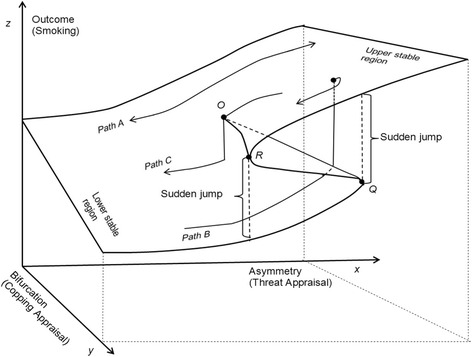Fig. 2.

Proposed Cusp Model for Adolescent Cigarette Smoking. This figure presents the dynamic change among three variables along with the equilibrium plane of a cusp model. The argument x as asymmetry or normal control factor decides that the z changes asymmetrically from one mode to the other mode with x increases. The argument y as the bifurcation or splitting control factor causes the z to split and bifurcate from smooth changes to sudden jumps with y increases. When y is in any situation where y < O, there is a continuous and approximately linear relation between the asymmetry variable x and outcome z (see path A in Fig. 2). However, when the bifurcation variable y is sufficiently large to pass O, change in outcome z will be no longer continuous. Path B shows that when x increases to pass an ascending threshold line O-Q, z will suddenly leap from the lower stable region to upper stable region; Path C shows a sudden drop in outcome z as x decreases to reach and pass the descending threshold line O-R. In this study, x = Threat Appraisal, y = Copping Appraisal, and z = Cigarette Smoking
